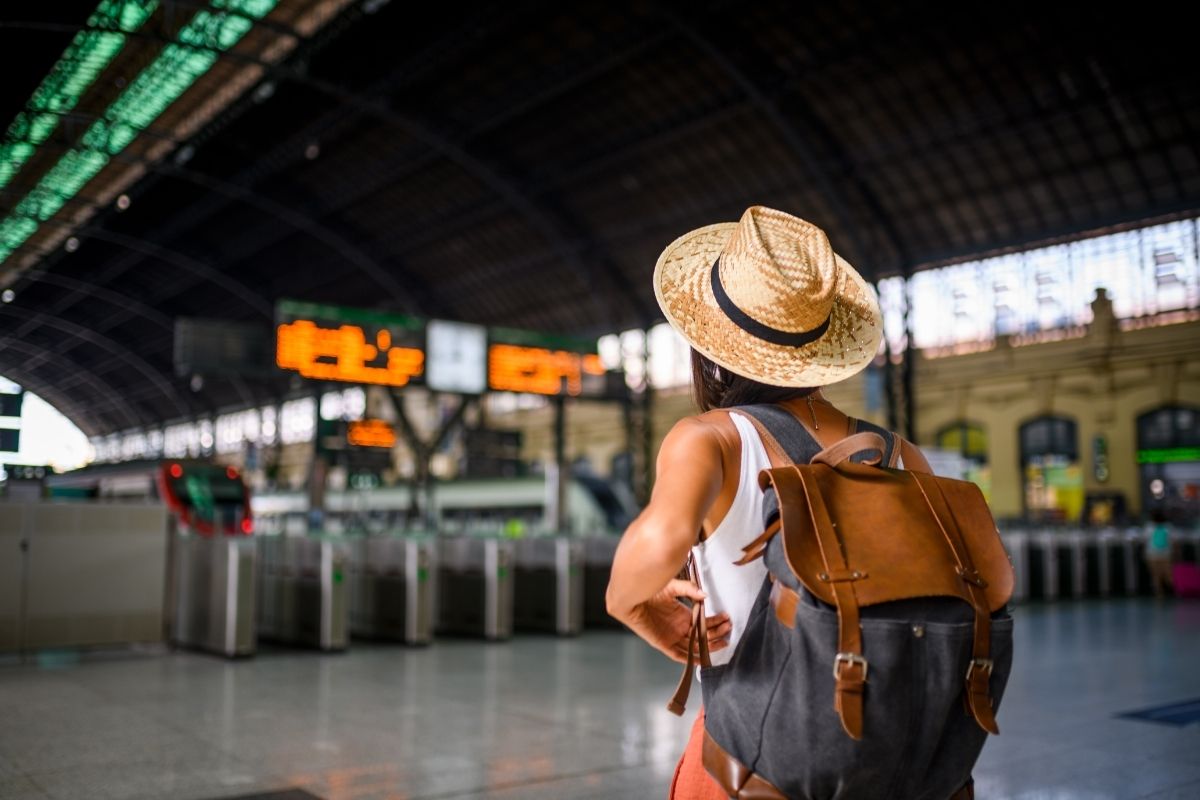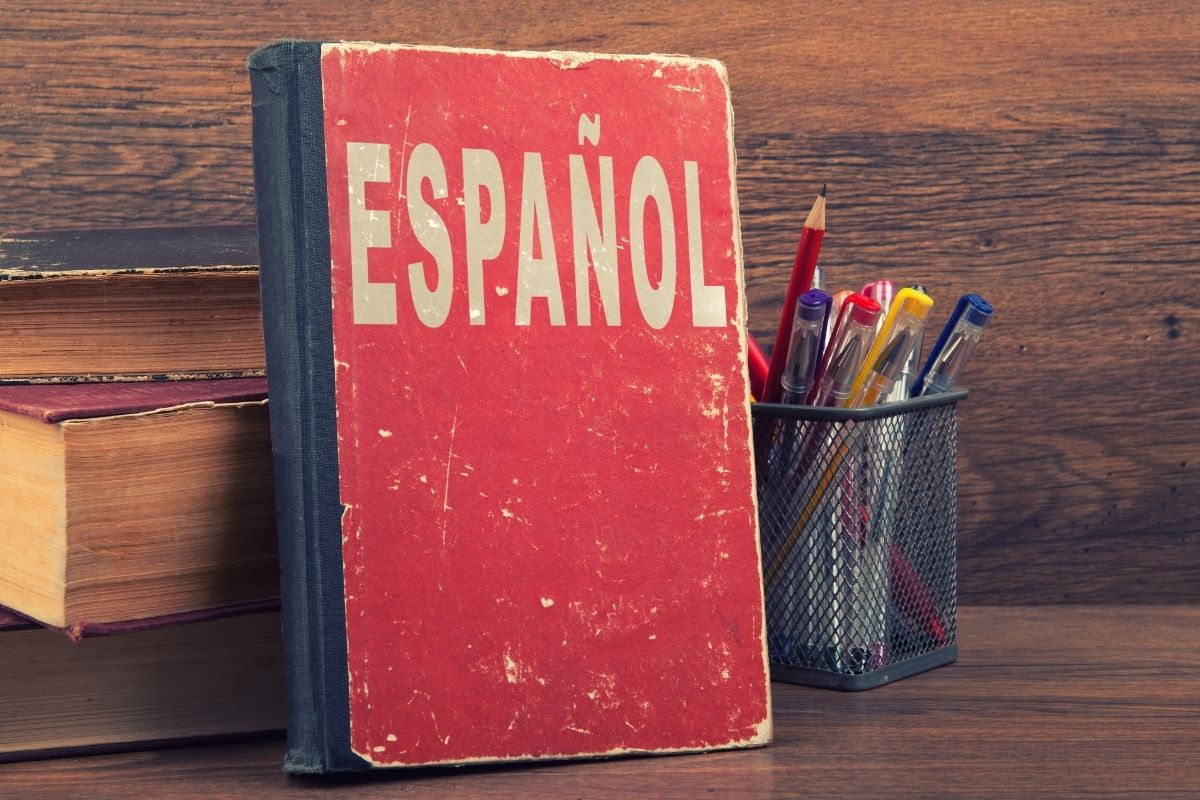Are you planning a trip to Cuba? Or maybe you just have a general interest in the country.
If you want to learn more about Cuban cuisine you have come to just the place!
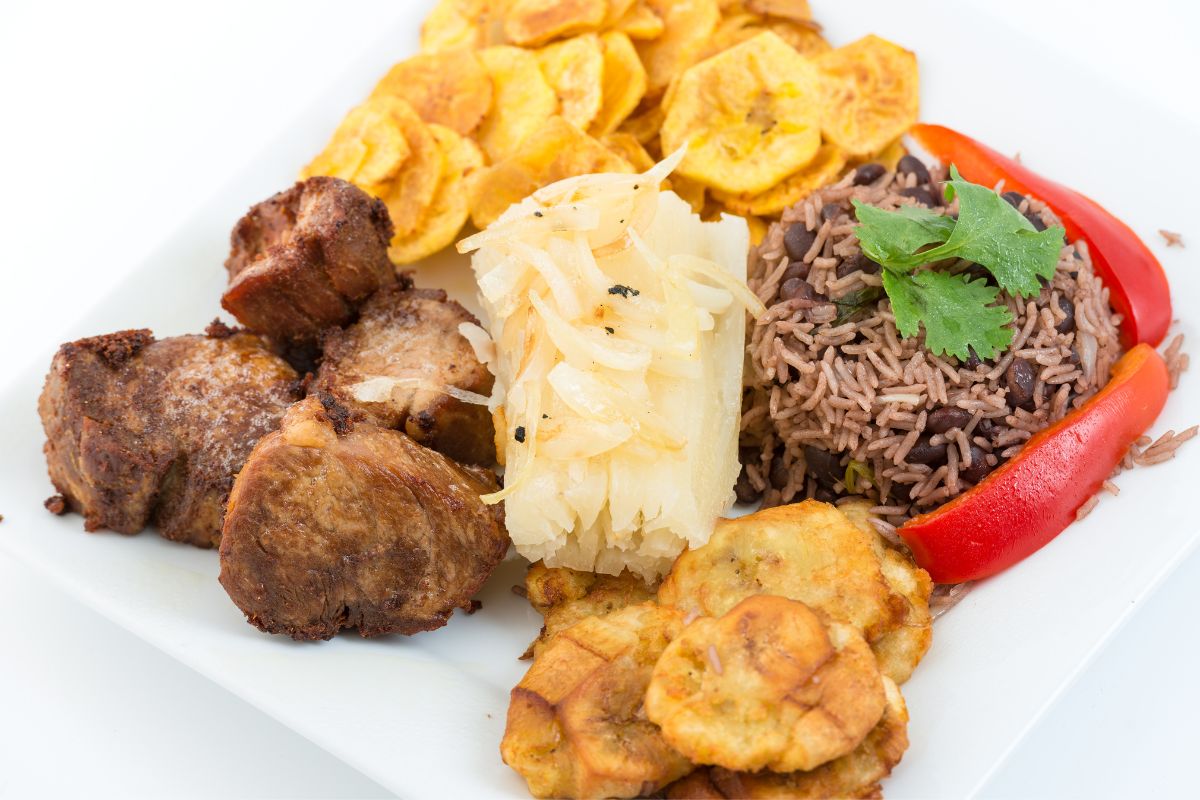
In this guide, we look at the traditional Cuban cuisine and give you our top tips and what you need to know, and dishes and food you simply must try!
Cuban Food
Cuban food has traveled across oceans and landed in international diners across the world thanks to its simple yet delicious dishes.
In Cuba, there can often be a struggle to access certain ingredients meaning it can be difficult to find tantalizing and tropical dishes as you journey across the country.
There are often food shortages in certain regions and economic hardship also plays into the lack of ability to access certain foods.
Cuba often trades its local fresh food which again limits the amount of local food that is left for the locals.
Despite these hardships, Cuban food is still known to be delicious.
It is very similar to other countries that lie within the Caribbean zone, such as Puerto Rico, Dominican Republic, and Colombia.
These cuisines are all blended with other ethnic foods, such as African, Taino, and Spanish.
There is a huge farm-to-table culture in Cuba that was instilled out of necessity when Fidel Castro overthrew the government leading to the worst food shortages in the country’s history.
Locals had no choice but to grow food to feed themselves.
The staple foods in Cuban cuisine are a combination of chicken, pork, fish, seafood, vegetables, beans, and rice.
If you are looking to eat like a local you can expect to eat a lot of this food cooked in beautiful authentically Cuban ways to give you a true taste of the country.
Typical Dining Experience In Cuba
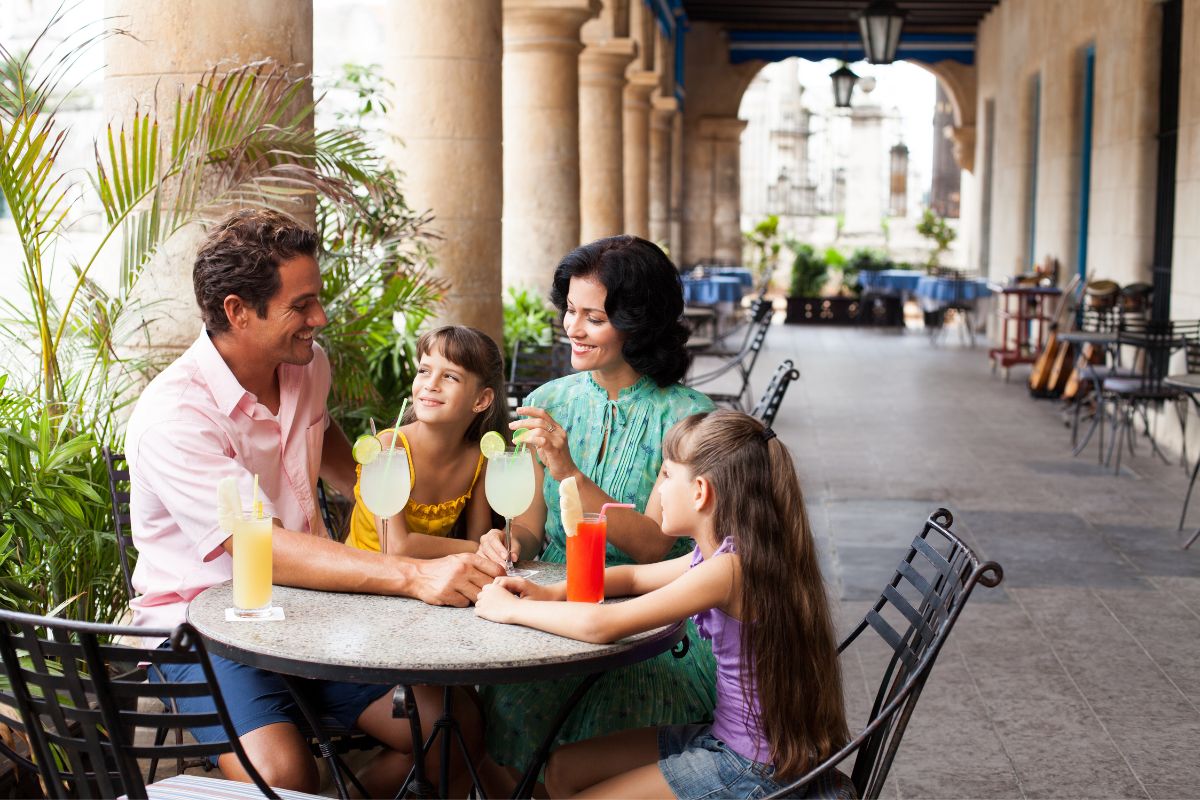
The restaurant industry in Cuba differs from other countries as it is controlled by the Cuban government.
This means that you can often find yourself experiencing some very inauthentic-feeling experiences during your time in Cuba.
If you want to enjoy a more authentic meal then you will need to visit a family-run paladares, which is a privately-owned restaurant.
The food in these establishments is often fresher than the government-run restaurants across the country.
They do however have rules to follow, for example, they cannot sell shrimp or lobster and they are limited to serving a maximum of 12 people per table.
Many paladares bend these rules and secretly serve these dishes anyway.
You can also expect that often when you look at a menu you will be told that several choices are not available due to food shortages.
This is common and something that you should not be frustrated by, it is just the reality of life in Cuba.
There are fast-food chains in Cuba also but large US chains such as McDonald’s and Burger King are not established on the island.
El Rapido is Cuba’s equivalent to KFC and Burgui is Cuba’s answer to McDonald’s.
We strongly recommend that you immerse yourself in the culture and eat at as many paladares rather than government-owned restaurants as possible.
These establishments are a great way to meet the locals and get an authentic taste of Cuba.
What To Eat In Cuba?
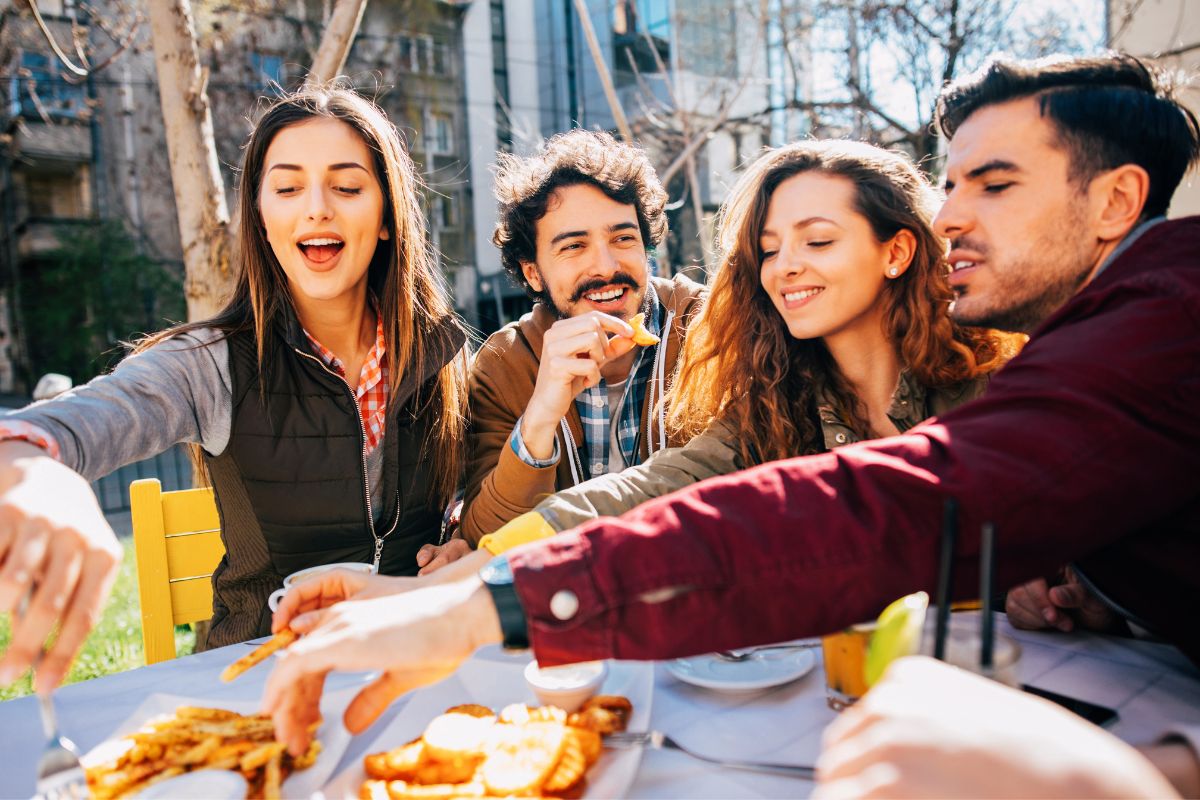
Like most countries, Cuba has certain times when you can expect the locals to eat their meals.
Breakfast is typically served between 7 am to 10 am and the locals would usually enjoy a cafe con Leche, which is an espresso with warm milk, with a tostada, which is grilled Cuban bread.
True locals will rip pieces of the bread to then dip into their coffee.
For lunch, you will see the locals enjoying a selection of empanadas. An empanada is a half-moon-shaped pastry that is typically fried or baked and can contain either sweet or savory fillings.
You may also see locals eating a pan con bistec for their lunch, which is a thin slice of steak that is served on bread with lettuce, and tomatoes, and served with fried potato sticks on the side.
For snacks between meals, you should try a pastelito which is a delicious turnover that can be found filled with a range of stuffings, including meat, cheeses, and fruit.
Dinner is normally focused around one main source of protein, which is typically either chicken or fish.
This is then typically served with white rice, back beans, and fried plantain.
Depending on the availability of vegetables a small salad may also be served alongside.
There are several truly wonderful, authentic Cuban dishes that you must try during your time in Cuba outside of the usual dishes that would be served for breakfast, lunch, and dinner.
These delicacies are explained below.
- Arroz con Pollo: the Cuban version of paella but made with rice and chicken
- Medianoche: Medianoche translates directly to midnight which is a fitting title as you can find this sandwich in the Havana nightclubs and it is made with sweet egg bread which is then filled with cheese, pickles, ham, and pork
- Frita: this is the Cuban version of a classic hamburger, here the patty is made with minced beef and frequently has chorizo through it also
- Ropa Vieja: this is one of the most popular Cuban national dishes, but with beef, as one of the main ingredients it can be a hard one to source in local restaurants. This dish is a Cuban stew that is flavored with onions and tomatoes. The beef is slowly cooked until it shreds
- Maduros: this dish is made of slowly cooked ripe plantain that caramelizes. Maduros are sticky and sweet and a Cuban favorite
Top Tips For Eating In Cuba
Below are some top tips that will help you on your food journey through Cuba.
- The standard gratuity percentage at a restaurant in Cuba is 10 to 15%, but of course, if you feel the meal was deserving of a larger sum this can also be left. Servers in Cuba are genuinely interested in tourists and so you should speak to them to learn more about the local area and get tips on what to do during your time there.
- While Cuba is very much a developing nation you will find that the dining etiquette is similar to that of western countries. Courtesy is an exchange between diners and waiting staff alike and using a few Spanish phrases will also be appreciated.
- There are also some words on the menu that you should know when an English version is not available.
- Moros: this is an abbreviation for a classic dish called Moro y Cristianos, which is white rice cooked with black beans.
- Colorados: this is an abbreviation for frijoles colorados, which are red beans
- Aporreado de Ternera: ternera is veal and aporreado is a dish that usually is made with beef or cod that has either been marinated or boiled. The marinade usually comprises tomato, garlic, and onions, and then to finish it is fried in oil or a small amount of butter.
Final Thoughts
We hope that this guide has opened your eyes to the delicious food you can experience during your travels in Cuba.
Cuban cuisine is a melting pot with lots of different influences but trying anything that made our guide will be sure to give you a taste of Cuba.
- What Is The Largest Island In Cuba? - September 19, 2022
- Havana – Why Is It Cuba’s Most Exciting City? - September 19, 2022
- Cheapest Time To Visit Cuba (Ultimate Guide) - September 19, 2022

